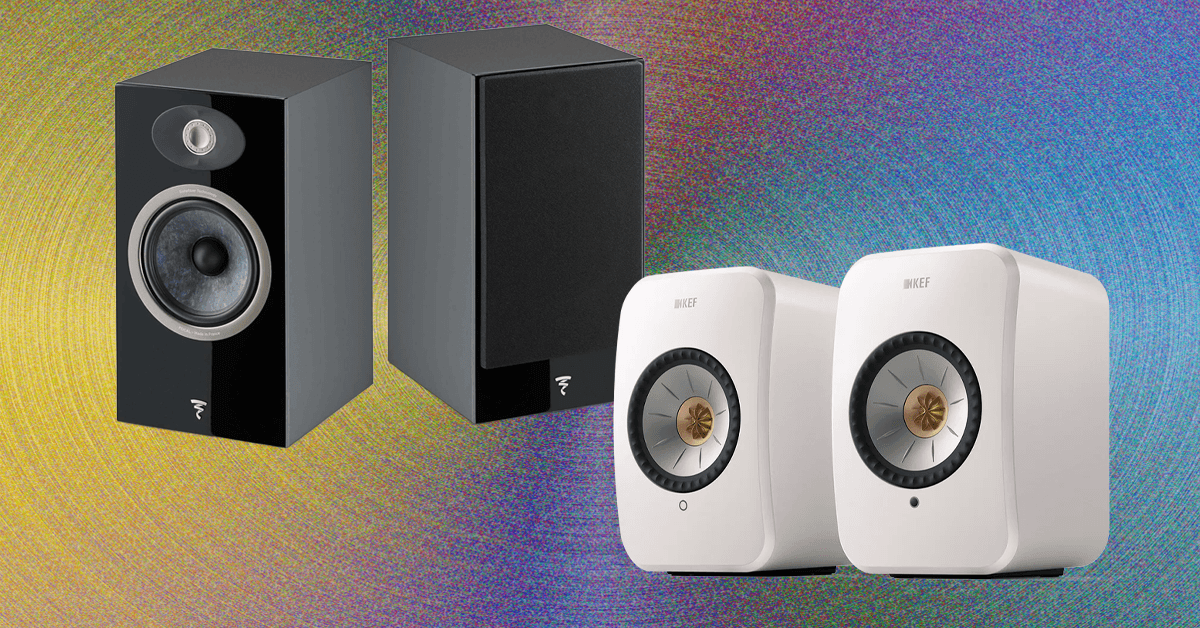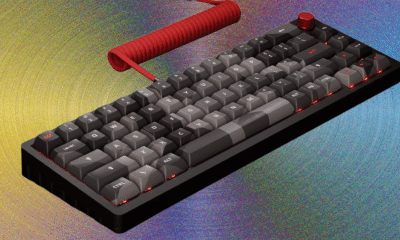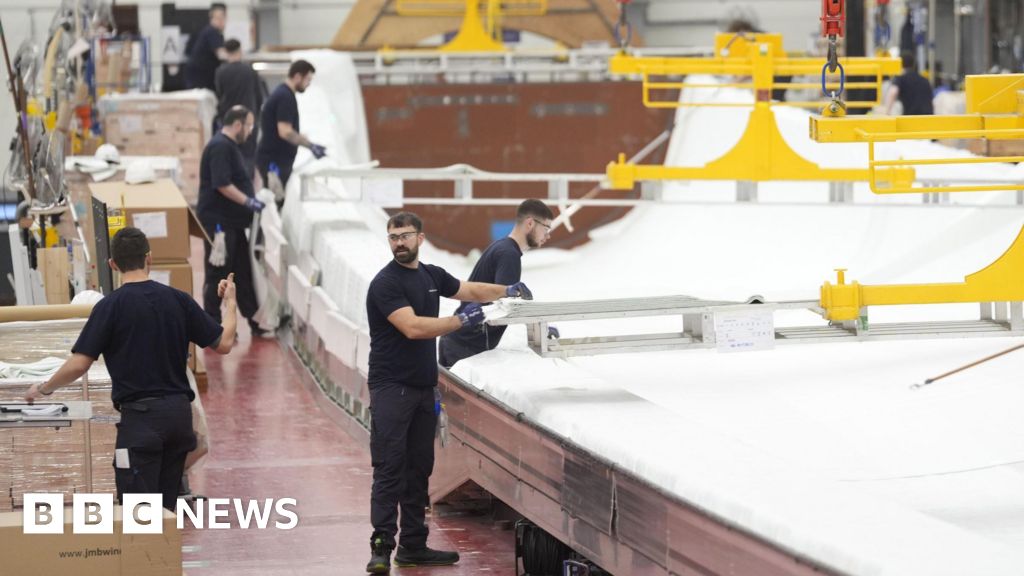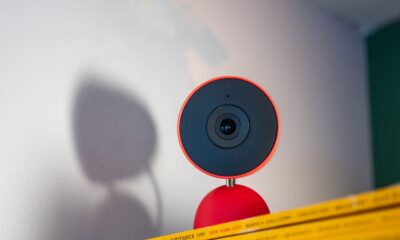Tech
Requtech retrofit programme sees creation of Satcom hub | Computer Weekly

Requtech has announced the launch of a satellite communications (Satcom) hub retrofit programme, aimed at modernising its Satcom hubs across Europe and beyond.
Founded in 2009 and now based in the Swedish city of Linköping, Sweden – known as the aviation and space capital – Requtech had the initial vision to disrupt the Satcom industry by setting new benchmarks in quality, efficiency and sustainability. It claims to be at the forefront of satellite communication technology, specialising in developing high-performance, reliable satellite communication systems. Its stated mission is to “revolutionise” communication capabilities, enhancing global connectivity through innovative services.
The company says it was built on three fundamental pillars that define both its name and mission: research, quality and technology. These principles are attributed by the company to have driven its journey from a specialised antenna design house to a leading innovator in Satcom services across geostationary, low-Earth and mid-Earth orbital satellite constellations.
Since inception, the company has developed over 100 Satcom systems, deployed in more than 40 countries for 60 diverse clients. Initially focusing on custom parabolic antenna designs, it has expanded to offer a product line comprising phased array and flyaway terminals, optimised for modern satellite constellations.
The retrofit programme will begin with a full Ka-band upgrade in a Nato country in close partnership with a leading hub operator. The Ka-band retrofit includes complete design, build and installation of the RF chain, covering the feeder, antenna horn and all associated components. The Requtech team will be involved throughout the entire process to deliver what is seen as “seamless” integration and optimised performance.
“With decades of experience in antenna design, including successful deployments of parabolic, phased array and troposcatter antennas, we are proud to expand our expertise into the infrastructure side of Satcom,” said Requtech CEO Omid Sotoudeh. “Our ability to deliver complete antenna systems now extends to full hub retrofits, allowing us to support operators with robust, future-ready solutions that meet the highest standards of performance and reliability.
“As experts in antenna and RF design, we believe in building strong, collaborative relationships. We warmly welcome partnerships with hub providers, value-added resellers and operators who share our vision for resilient and scalable Satcom infrastructure. Our goal is not to compete, but to complement, bringing deep technical expertise and a spirit of cooperation to every project. We look forward to offering these retrofit services to additional Satcom hub operators seeking reliable, scalable and mission-ready upgrades.”
Following the Ka-band deployment, the company will extend the retrofit services to Ku-band hubs, applying the same approach to deliver high-throughput connectivity.
The retrofit programme comes hot on the heels of Requtech announcing investment from Swedish defence technology company Evallic.
The investment sees Evallic’s entry into the Satcom market, which it says is crucial to enable secure communication in defence, government and critical infrastructure, offering Requtech backing and scale.
Evallic has customers in over 30 countries and operational deployments across more than 95% of Nato member states, offering systems that enhance situational awareness, decision-making and operational effectiveness.
Tech
17 Thoughtful Gifts for Your Coworkers That Are Under $50

Every office is a microcosm of personalities, making the quest for the best gifts for coworkers exciting and baffling. You’ve got the snack lover, whose bottomless drawer of treats resembles a mini convenience store, always offering a morsel during that mid-afternoon slump. There’s the wellness enthusiast, ever zealous to remind us to take a break and breathe. And let’s not forget the Gen Zer, a beacon of pop culture, stocked with podcast recommendations and eager to draw you into their latest binge-worthy obsession.
Even if your team is remote, these quirks show in the little details: Zoom backgrounds that reveal snippets of our personal lives, Slack banter that often teeters on the line between productivity and procrastination, and those GIFs we can’t help but overuse. Shopping for gifts for coworkers can feel daunting, but you probably know them better than you think.
To help you brainstorm and reflect on some of the characters in your work environment, we’ve rounded up thoughtful gifts that cater to every persona, from the foodie to the tech whiz. Don’t see anything you like? Don’t press Checkout on that lazy gift card just yet—explore our other gift giving guides, from travel gifts to gifts for women, and our favorite stocking stuffers.
Updated October 2025: I’ve added the Pura Mini smart home fragrance diffuser and the Spigen OneTap Pro 3 Cryomax wireless charger. I’ve also updated prices and links.
Tech
These Are The Best Bookshelf Speakers for Your Living Room or Desk

Other Good Speakers We Tested
We test a lot of speakers, and not all of them make it to the top list. Sound is subjective, so it’s worth looking at lots of models before diving in. Here are some more solid options.
Photograph: Ryan Waniata
Fluance Ri71: The Ri71 is a great-sounding and affordable pair of active speakers with some operational quirks. Their versatile input selection includes HDMI ARC to connect to your TV, but unlike every other such pair I’ve tested, your TV remote only controls volume, not power, and the speakers maintain independent volume levels. That means you don’t get the seamless TV experience that makes other ARC-enabled speakers and amplifiers great soundbar alternatives. Otherwise, their clear, warm, and balanced sound for everything from Bluetooth streams and vinyl to sitcoms and movies makes them worth considering at their $400 launch price.
Bowers and Wilkins 606 S3 Passive Speakers: These midrange audiophile speakers are gorgeously crafted and fantastically musical for their price. The only real quibble I raised in my review is that their upper midrange/treble is sometimes too sharp for my taste, especially with TV content. Otherwise, they’re a sweet ride that oozes quality.
Uturn Ethos Powered Speakers: Uturn’s Ethos speakers were tailored to pair with your Uturn turntable, and they made for a sweet match with my Orbit Theory reference model (9/10, WIRED Recommends). They’re beautifully made and offer a potent A/B amplifier to keep your vinyl in the analog realm that hums softly without getting in the way. The downside is their lack of inputs or features, including zero EQ, so you’d better love what you hear from the get-go.
Yamaha NS-600A Passive Speakers: Yamaha’s gloriously crafted NS-600A (8/10, WIRED Recommends) will reveal details, textures, and dare I say, emotions you never noticed in your favorite music and movies. Like the B&W 606 S3, their treble sometimes has too much bite for my taste. I’d be fine with that for half the price, but at $3K (or more) per pair, I want the perfect sonic match. If you like a keener cut to your favorite tunes, this pair could be yours.
Power up with unlimited access to WIRED. Get best-in-class reporting and exclusive subscriber content that’s too important to ignore. Subscribe Today.
Tech
Are Kids Still Looking for Careers in Tech?

Today’s high school students face an uncertain road ahead. AI is changing what skills are valued in the job market, and the Trump administration’s funding cuts have stalled scientific research across disciplines. Most professions seem unlikely to look the same in 10 years, let alone 50. Even students interested in STEM subjects are asking: What can my career look like, and how do I get there?
WIRED talked to five high school seniors from across the country about their interest in STEM—and how they’re making sense of the future.
These comments have been edited for length and clarity.
This Generation Needs to Be at the Forefront of AI Development
I’ve always had an interest in computer science, but my interest in AI started my junior year. The part that hooked me was how applicable it was to our daily lives. I was able to see the rise of ChatGPT and other LLMs, and how people were using them in my academic life. Some people would use it unethically on tests or assignments, but it could also be used to create practice problems. Being able to see how rapidly it’s evolving in front of me was the main reason I became interested. It’s affecting our academic life so much that it’s imperative that we’re at the forefront of how it’s being developed.
My school is a math and science academy, so I got to explore independent research related to LLMs. One of the main things I worked on was how LLMs can sometimes indirectly give out private data. Say you ask it to code something for you that requires an API key, which is sensitive information. Because it’s trained on a vast amount of data, it could have an API key in its data set, and it’ll give you code, possibly including the API key. My most accomplished research project was developing an algorithm to cut out those private pieces of data during its training, to allow it not to spew out these pieces of private data during use.
AI is such a new field that’s evolving, that if we’re able to set roots in it right now, we’d be able to see that outcome as we grow older. Understanding its security is very important to me, especially considering it’s being used almost blindly by everyone. What interests me is being at the forefront and making sure I can have some say in how my data is being used.
I’m applying to undergrad programs right now, and I’m also looking at some untraditional routes, where you go straight into an industry. Right now, in computer science, sometimes a degree is just a baseline, and if you have the skills, it’s not even necessary. So I’m looking into other options. —Laksh Patel, 17, Willowbrook, Illinois
Health Care Access Starts With Communities
My family, on both sides, has a long history of women developing neurodegenerative disease, mostly Alzheimer’s and Parkinson’s. So I spent my whole childhood playing doctor, treating my family matriarchs, tending to them and seeing how their diseases progressed. I became so interested in how these diseases worked, and how I could help patients like the ones in my family and my community who didn’t have access to medical resources because of their income.
I’ve really developed a love for patient care, for being able to help a person in such a debilitating time in their lives. As those female family members began to fade away and pass on, I realized how quickly these diseases spread and why they were so detrimental, especially without proper medicine. When I got into high school, I started to get oriented with research, so that I could gain a base level of understanding to bring to college to try to begin my career as early as possible and help more people.
-

 Tech1 week ago
Tech1 week agoHow to Protect Yourself Against Getting Locked Out of Your Cloud Accounts
-

 Tech1 week ago
Tech1 week agoThe DeltaForce 65 Brings Das Keyboard Into the Modern Keyboard Era—for Better or Worse
-

 Business1 week ago
Business1 week agoGovernment vows to create 400,000 jobs in clean energy sector
-

 Business1 week ago
Business1 week agoDiwali 2025: Gold & silver likely to consolidate next week; Here’s what analysts said – The Times of India
-

 Tech1 week ago
Tech1 week agoSome major Australian towns still have poor phone reception—it’s threatening public safety
-

 Tech1 week ago
Tech1 week agoGemini in Google Home Keeps Mistaking My Dog for a Cat
-

 Fashion1 week ago
Fashion1 week agoEgypt’s apparel exports rise 25% in H1, trims US market reliance
-

 Fashion1 week ago
Fashion1 week agoReal UK GDP grows 0.3% QoQ in quarter to Aug 2025: ONS





